Welcome back to our LAST week of our Reading Comprehension Strategies Series. Can you believe it? We’ve explored quite a few comprehension strategies in this series by SHOWING how to introduce them and release them to your child.
Today’s topic is helping readers summarize what they read. Whew. What a big topic! If you thought determining importance and synthesizing were big topics, I’d rank this one as a step even higher. So, how in the world do you teach a middle schooler to summarize, let alone a 3rd grader?!?
That’s where summarizing with basic signal words can come in to the rescue {and this is just ONE idea for helping kids create summaries!} Note: the FREE printable pack link can be found at the END of this post.
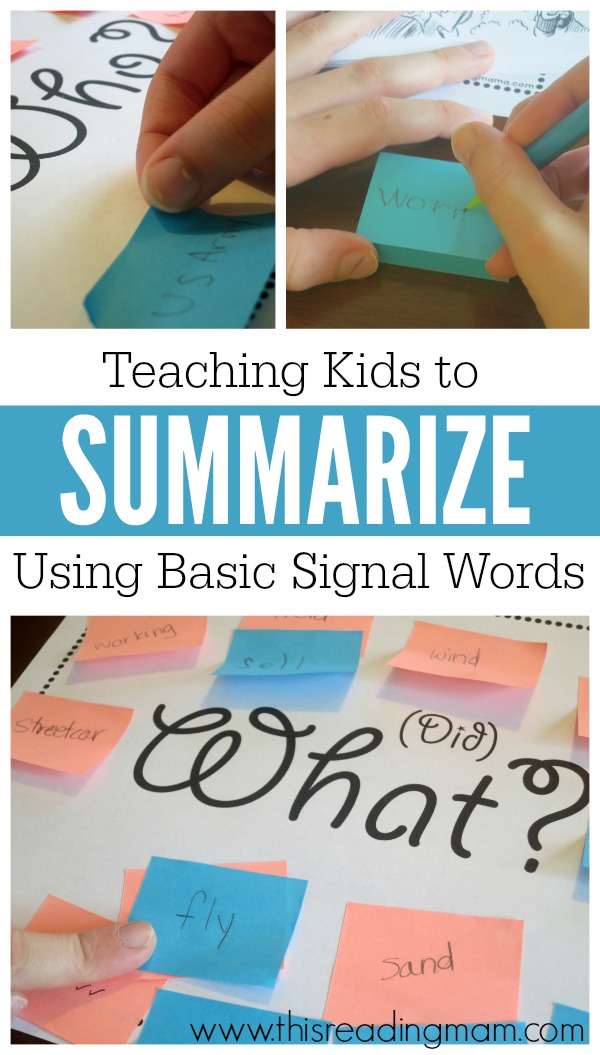
*This post contains affiliate links.
Steps to Teaching Kids to Summarize
Before we jump to far into teaching kids to summarize, I want to re-visit the teaching concept of releasing responsibility to your child {this was actually the topic of my very first blog post!} Just recently, it was explained this way:
Step 1: ME – I do it. The child mostly watches and listens.
Step 2: WE – I do it. The child helps me. I give immediate feedback on the “help.”
Step 3: TWO – The child does it. I support the child with immediate feedback and help when needed. {In a classroom setting, this could be two kids working together to work on the skill while the teacher provides feedback.}
Step 4: YOU – The child does it by himself.
Summarize Using Basic Signal Words
Hang with me! There are a lot of steps included below, but it’s because I’m trying to be as explicit in showing you how we did it as possible. 🙂 I HIGHLY recommend breaking these steps into two or even three sittings, not all at one time.
1. Look at text ahead of time. Pick a shorter text and then break it into four semi-equal sections. Four sections are best because it makes it easy to use for ME, WE, TWO, & YOU.
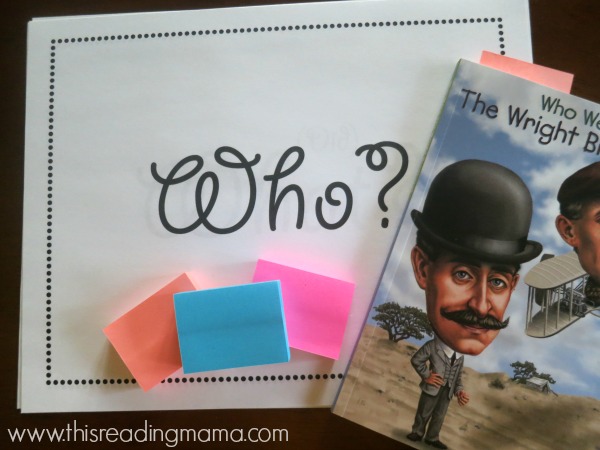
I used one chapter from Who Were the Wright Brothers? by , one of our favorite nonfiction series.
2. Read the entire text without stopping. The text you’re going to summarize needs to be a familiar one. Because you’ll be stopping and starting a lot with the next part of this lesson, it is important for comprehension sake that you read it through so the child knows what the text is all about.
3. Introduce the Six Signal Words. I laid out the signal words {question words} on the table and quickly explained each one as:
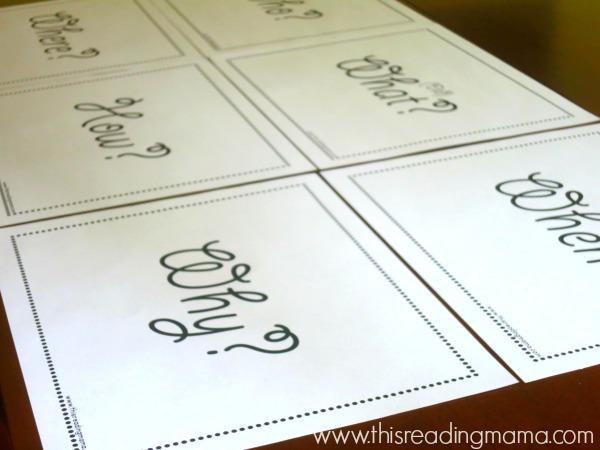
Who? – Who or what is the text about?
(Did) What? – Subject of the sentence (usually not a person); could be an action of the person
When? – the time or date
Where? – the location
How? – the process or procedure to accomplish the goal
Why? – the reason or rationale behind the did what
4. Summarize with ME {Step 1, as mentioned above.} I read to the end of section 1, as he listened and watched. As I came across a signal word, I jotted it down on a sticky note and stuck it on the appropriate signal word mat. Every signal word that you can find should be included on the mats.
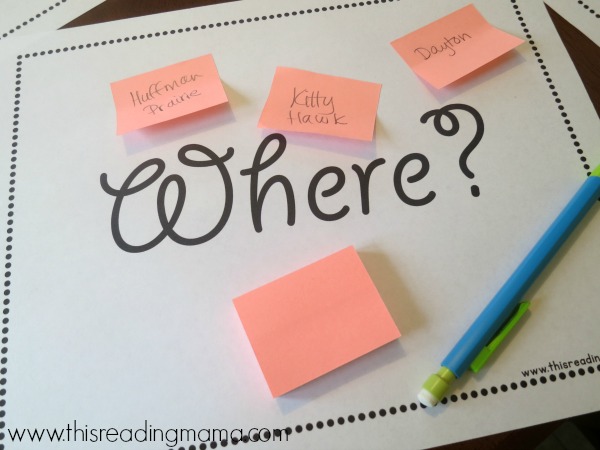
For example, Kitty Hawk was a Where? I wrote down KITTY HAWK and stuck it on the Where? mat.
The goal is not to put an equal amount of sticky notes on each signal word. Who? and (Did) What? typically have the most, while some texts may never include How? and Why?
5. Summarize with WE {Step 2.} I read to the end of section 2, and he helped me find the signal words.
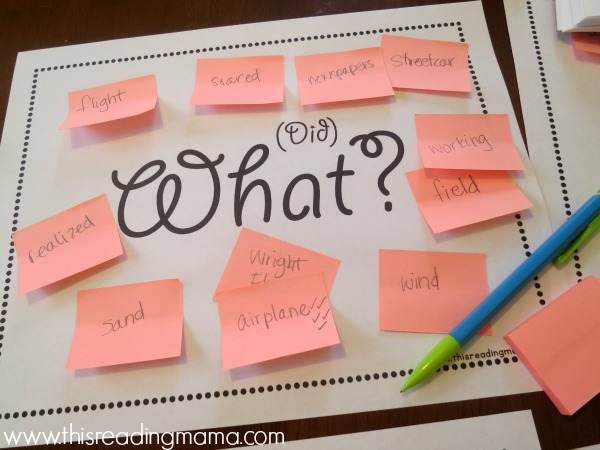
I still wrote the words and stuck them on the mats.
6. Summarize with TWO {Step 3.} He read section 3 of the text and we looked for the signal words together.
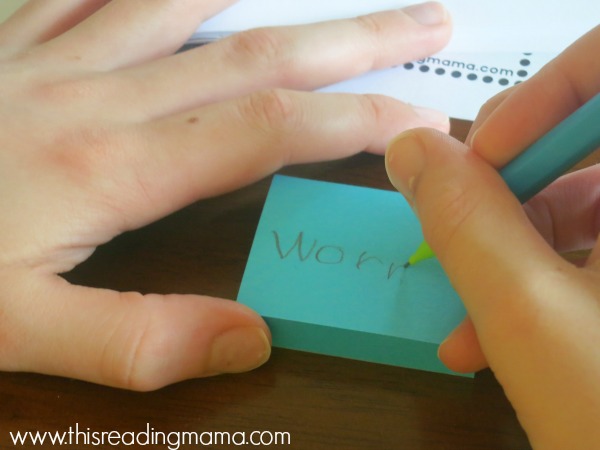
He wrote them down on the sticky notes and we decided together where to stick them on the mats.
7. Summarize with YOU {Step 4.} He read the last section of text and wrote down the signal words
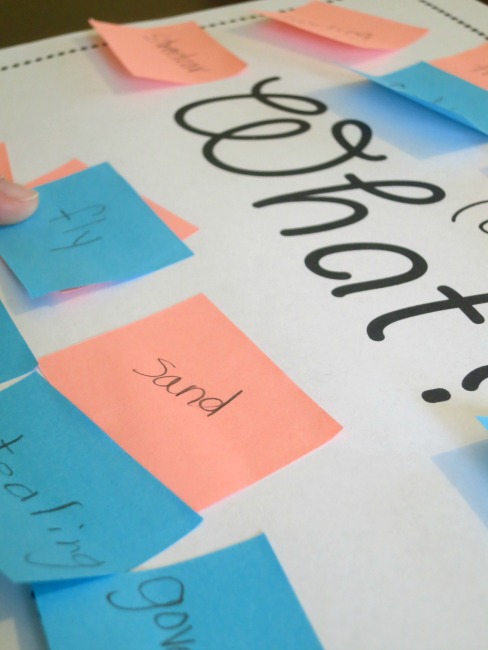
and stuck them on the mats. I encouraged him to do it as independently as he could, but was there to provide any support needed.
8. Find the most important or key ideas from the passage. The very awesomely, cool thing about teaching summarizing this way is that important topics in the text “jump” out at you, making it easier for kids to see them.
Here’s what I mean. While we were reading, if a certain “Who?” or “(Did)What?” was mentioned more than once, instead of listing it on another sticky note, we simply put a check beside it on the sticky note we already had.
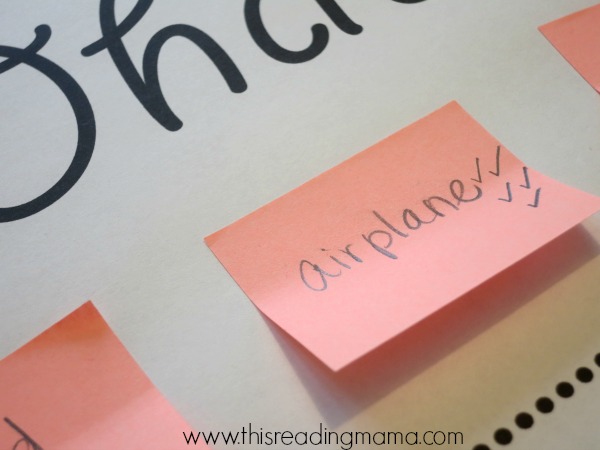
For example, airplane was an important concept to the text. And this was evident by all the check marks beside airplane. So, I know that in my summary, airplane needs to be there because it has so many check marks. It is important!
9. Rearrange sticky notes, looking for common themes or topics. I love using sticky notes for this very reason: Kids can manipulate the concepts and move them around when needed.
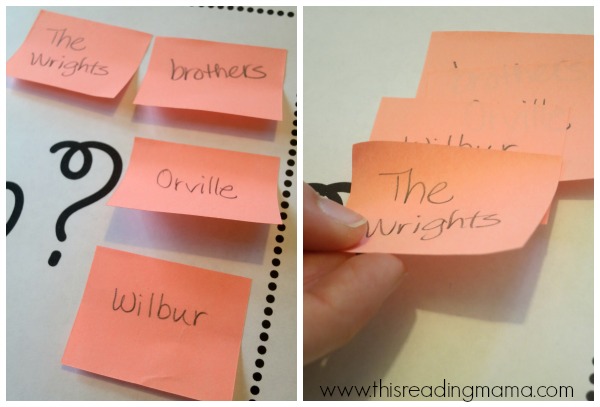
For example, the text mentioned, the brothers, Wilber, Orville, and The Wrights. Well technically, these are all the same thing! So instead of dealing with all four things as separate concepts, we collapsed our notes by putting all of them on top of each other, leaving The Wrights as our main “Who.”
Sometimes the how’s and the why’s also can merge. For example, we decided that testing airplane could be a why and a how at the same time.
10. Use the sticky notes to help you create a summary sentence {or two.} Pull off the sticky notes that are important from each signal word mat, based on steps 8 and 9 above. Use these important concepts to create a one or two sentence summary of the text.
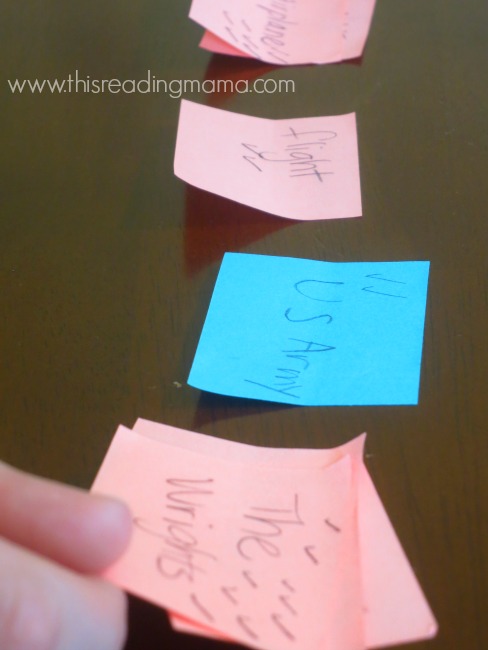
Note: the summary does not always have to be written down! Sometimes just working through it and then verbally coming up with a summary is enough. But, I do find that writing it down helps because you can scratch out and rearrange until you have it as you like it.
And no two summaries will be exactly the same, even though you’re working with the same text. Although the important concepts should be included, the way kids word it will be a little different because we all have a different voice when it comes to writing.
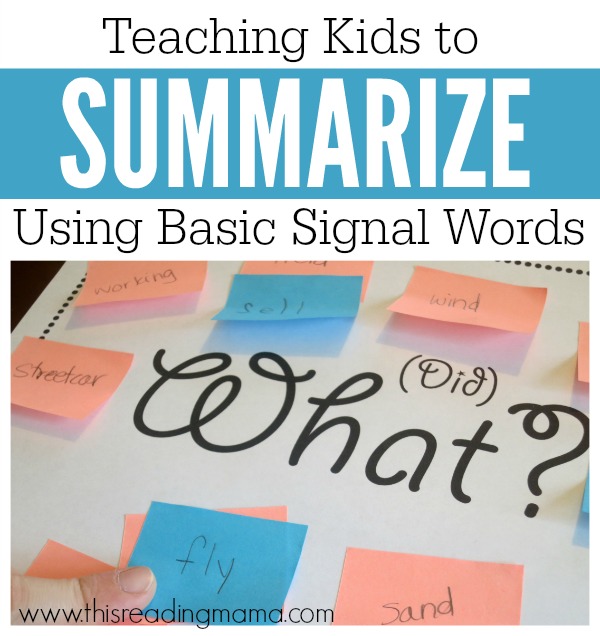
>>Download the FREE printable Signal Words for Teaching Kids to Summarize.<<
See all 10 posts in our Reading Comprehension Strategies Series!
~Becky
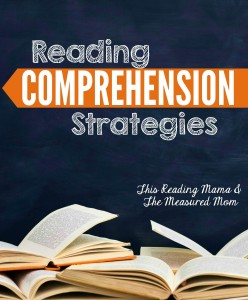
Oh wow – thank you, this is awesome. We tend to get the whole story recited word for word from our kids when we ask – I’m going to print this out and try it with them!
I love the signal mats with the sticky notes – will be using this strategy next year in our homeschooling format. Thank you!!
My child is dyslexic. She gets easily overwhelmed, mixed up and often doesn’t know where to start. This helped immensely. Thank you! Thank you!
You’re welcome! I think it’s SO important to really break down the steps for kids that struggle. It empowers them to have success and understand the HOW behind it all. 🙂